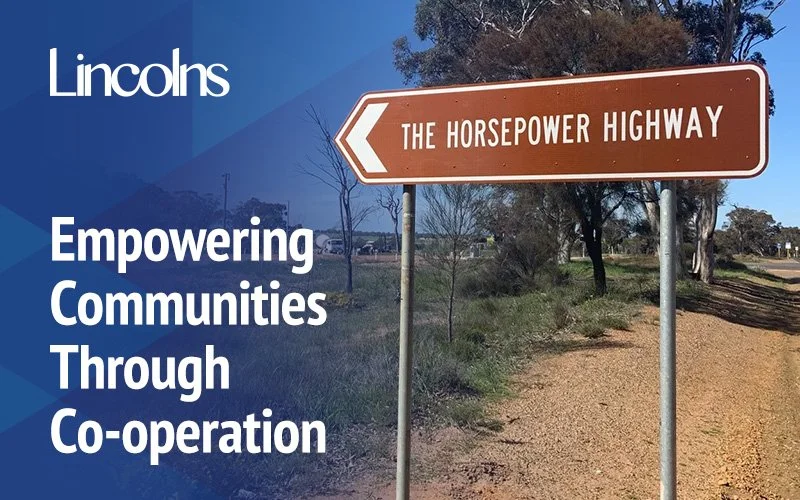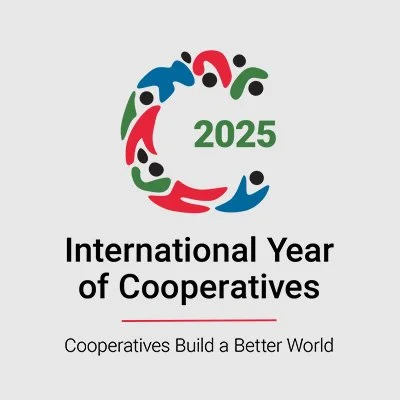Understanding Co-operatives: A Path to Community Empowerment
By Kym Arnold & Thomas Warner
February 2025
Over the next four months, we’re excited to introduce you to the concept of co-operatives and explore how communities and businesses are using this powerful model. We’ll take a closer look at three inspiring co-operatives, their journey, their achievements, and their vision for the future.
In communities across Australia and around the world, co-operatives are transforming the way people work together to meet common goals. They’re not just about running businesses; they’re about building resilience, fostering connections, and ensuring shared prosperity. But what exactly is a co-operative, and why are they so impactful?
What is a Co-operative?
A co-operative is a values-driven business model owned and operated by its members to meet their shared economic, social, or cultural needs. Unlike traditional businesses that focus primarily on generating profit for shareholders, co-operatives prioritise the collective benefit of their members. Whether the members are customers, employees, or community stakeholders members, co-operatives operate democratically—with each member having an equal vote, regardless of their financial contribution.
Types of Co-operatives
Co-operatives are incredibly versatile and can be found in a variety of sectors. Here are some of the main types:
Community Development Co-operatives: These focus on revitalising local communities by addressing gaps in services or infrastructure. An example of this is the GNP 360 Co-operative in Gnowangerup, Western Australia which revitalised a historic pub to create community spaces, local employment, and accommodations, fostering social and economic activity in the region.
Producer Co-operatives: These are formed by producers, such as farmers or artisans, to collectively process, market, or sell their goods. CBH Group, Australia’s largest co-operative, exemplifies this model, serving Western Australian grain growers, since 1933 and continuing today to be one of the best-known producer Co-operatives in the country.
Service Co-operatives: These provide essential services, such as aged care, housing, or utilities, to their members. An example in Western Australia is the Beacon Co-operative, which offers groceries, banking, postal services, and fresh provisions, becoming a central hub for the community while supporting local connections and economic activity.
Worker Co-operatives: Owned and controlled by employees, these co-operatives ensure that profits and decision-making remain with the workers. An example in Western Australia is the Galactic Co-operative, which operates as a worker-owned tech and creative services hub. It provides members with equitable employment opportunities and fosters innovation within the local economy.
Consumer Cooperatives: These cooperatives are owned by the consumers who use their services. They often provide goods like groceries, hardware, or even fuel. An example is the Barossa Co-op, one of Australia’s largest and most successful retail cooperatives, or, more locally, Mount Barker Co-op.
Peter Kenyon: A Champion of Co-operatives
When discussing co-operatives in Australia, it’s impossible to overlook the contributions of Peter Kenyon, the Director of the Bank of I.D.E.A.S. Over the years, Peter has been a driving force behind the resurgence of co-operatives, particularly in regional and rural areas. His work focuses on empowering communities to take control of their futures through collective action.
Peter has collaborated with numerous organisations, including the Business Council of Co-operatives and Mutuals (BCCM) and the CBH Group, to promote the co-operative model as a tool for creating community resilience and shared prosperity. His projects span from saving local pubs and stores to enabling renewable energy initiatives and fostering local economic development. His philosophy is simple: communities thrive when they come together to identify their needs and work collaboratively to address them.
Why Co-operatives Matter
Co-operatives offer a powerful alternative to traditional business models by prioritising people and communities over profit. They provide a way for communities to retain or create essential services, support local economies, and ensure that the benefits of their activities remain within the community. With a 175-year history in Australia, co-operatives have proven their ability to adapt and thrive across industries and generations.
As we embark on this four-part series, we’ll delve deeper into the stories, principles, and strategies that make co-operatives a cornerstone of community development.
To support your exploration of co-operative structures, we've included a free resource on cooperative loan schemes, which is available for download here.
Stay tuned to explore how co-operatives are making a difference and how your community could benefit from embracing this inspiring model or call us at (08) 9841 1200 for any questions.
UN Proclaims 2025 as International Year of Co-operatives
In 2025, the United Nations will celebrate the International Year of Cooperatives (IYC2025) under the theme "Cooperatives Build a Better World." This initiative aims to elevate the significant role of cooperatives in achieving sustainable development, enhancing economic inclusion, and building community resilience globally. The designation of IYC2025 is a strategic move to spotlight cooperatives' unique contributions to solving pressing global challenges, emphasizing their impact on promoting the Sustainable Development Goals (SDGs).
Throughout the year, a variety of events and activities are planned globally, involving governments, cooperatives, and different stakeholders to promote the cooperative model. These activities are intended to increase public awareness, encourage supportive policies, and foster growth within the cooperative sector. The UN and its partners are committed to demonstrating that cooperatives, by their nature, are a key to sustainable socioeconomic development.
For more detailed insights on this initiative, you can visit the official UN page department of economic and social Affairs here.


